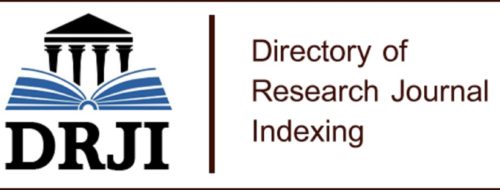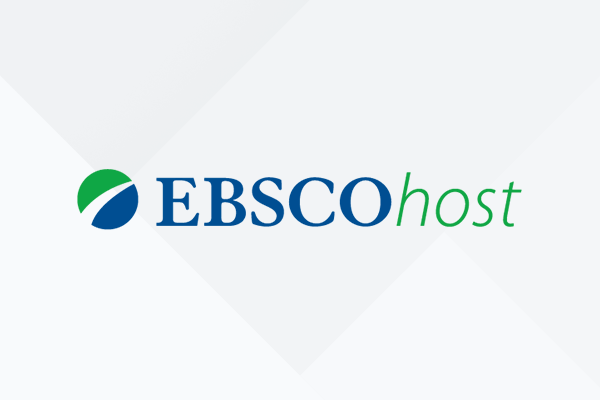Impact of Customer Relatıonship Management on Innovation: A Field Survey in The Banking Sector in The Provinces Of Erzincan and Erzurum
Öz
Customer relationship management is the management strategy that aims to satisfy the customer in the relationship between the companies and their customers, to establish strategic relationships with the customers and to manage the relationships, and also that utilize technology while carrying out it. Innovation is the realization of changes and innovations that create added value in products, services and processes. This research has been applied to bank managers in Erzincan and Erzurum city center. In this sense, the data obtained with 50 questionnaire forms were evaluated. In the analysis of the data, SPSS 22 statistical package program has been used, and frequency distribution, mean, standard deviation and regression analysis were utilized. As a result of the study, it has been seen that customer relationship management has an effect on innovation and innovation types – product innovation, process innovation, administrative innovation, marketing innovation, and service innovation.
Anahtar Kelimeler
Customer Relationship Management Innovation Customer Relationship Management Activities Innovation Capabilities.
Kaynakça
- KAYNAKÇAAlegre, J., Lapiedra, R. ve Chiva, R. (2006). A measurement scale for product innovation performance. European Journal of Innovation Management, 9(4), 333-346.Al-sa’di, A. F., Abdallah, A. B. ve Dahiyat, S. E. (2017). The mediating role of product and process innovations on the relationship between knowledge management and operational performance in manufacturing companies in Jordan. Business Process Management, 23(2), 349-376.
- Armbruster, H., Bikfalvi, A., Kinkel, S. ve Lay, G. (2008). Organizational innovation: The challenge of measuring non-technical innovation in large-scale surveys. Technovation, 28(10), 644-657.
- Aslan, Y. (2018). İnovasyonun firma performansı üzerine etkisi: Türk sermaye piyasası üzerine bir inceleme (Yayımlanmamış Doktora Tezi). Yüzüncü Yıl Üniversitesi, Van.
- Bhat, S. A., ve Darzi, M. A. (2016). Customer relationship management: An approach to competitive advantage in the banking sector by exploring the mediational role of loyalty. International Journal of Bank Marketing, 34(3), 388-410.
- Butler, S. (2000). Changing the game: CRM in the e-world. Journal of Business Strategy, 21(2), 13-14.
- Cavusgil, T., Roger, C. ve Yushan, Z. (2003). Tacit knowledge transfer and firm innovation capability. Journal of Business & Industrial Marketing, 18(1), 6-21.
- Charoensukmongkol, P. ve Sasatanun, P. (2017). Social media use for CRM and business performance satisfaction: The moderating roles of social skills and social media sales intensity. Asia Pacific Management Review, 22, 25-34.
- Chen, E. ve Ho, K. K. (2002). Demystifying innovation. Perspectives on Business Innovation, 8, 46-52.
- Chen, K-H., Wang, C-H., Huang, S-Z. ve Shen, G. C. (2016). Service innovation and new product performance: The influence of market-linking capabilities and market turbulence. International Journal of Production Economics, 172, 54-64.
- Cumming, B. S. (1998). Innovation overview and future challenges. European Journal of Innovation Management, 1(1), 21-29.
- Damanpour, F., Szabat, K. A. ve Evan W. M. (1989). The relationship between types of innovation and organizational performance. Journal of Management Studies, 26(6), 587-602.
- Damanpour, F. (1992). Organizational size and innovation. Organization Studies, 13(3), 375-402.
- Damanpour, F. (1996). Organizational complexity and innovation: Developing and testing multiple contingency models. Management Science, 42(5), 693-716.
- Drucker, P. F. (1996). Innovation and Entrepreneurship. New York: Routledge.
- Elenkov, D. S. ve Manev, I. M. (2005). Top management leadership and influence on innovation: The role of sociocultural context. Journal of Management, 31(3), 381-402.
- Eskafi, M., Hosseini, S. H. ve Yazd, A. M. (2013). The value of telecom subscribers and customer relationship management. Business Process Management Journal, 19(4), 737-748.
- Güleş, H. K. ve Bülbül, H. (2004). Yenilikçilik, İşletmeler İçin Stratejik Rekabet Aracı. Ankara: Nobel Basım Yayın.
- Gümüşboğa, F. (2015). Bankacılıkta Müşteri İlişkileri Yönetiminin Müşteri Sadakatine Etkisi (Yayımlanmamış Yüksek Lisans Tezi). Karabük Üniversitesi, Karabük.
- Günday, G., Ulusoy, G., Kılıç, K. ve Alpkan, L. (2011). Effects of innovation types on firm performance. International Journal of Production Economics, 133, 662-676.
- Güzel, D. (2016). Yeniliğin İşletme Performansına Etkisi: İmaltaçı Kobi’lerde Bir Araştırma. Ankara: İmaj Yayınevi.
- Hammer, M. (2004). Deep change: How operational innovation can transform your company. Harvard Business Review, 82(4), 84-93.
- Heide, J. B. ve Miner, A. S. (1992). The shadow of the future: Effects of anticipated interaction and frequency of contact on buyer–seller cooperation. Academy of Management Journal, 35(2), 265–291.
- Ibarra, H. (1993). Network centrality, power, and innovation involvement: Determinants of technical and administrative roles. Academy of Management Journal, 36(3), 471-501.
- Kimberly, J. R. ve Evanisko, M. J. (1981). Organizational innovation: The influence of individual, organizational, and contextual factors on hospital adoption of technological and administrative innovations. Academy of Management Journal, 24(4), 689-713.
- Lagrosen, S. (2005). Customer involvement in new product development: A relationship marketing perspective. European Journal of Innovation Management, 8(4), 424-436.
- Lin, R-J., Chen, R-H. ve Chiu, K. K-S. (2010). Customer relationship management and innovation capability: An empirical study. Industrial Managemenet & Data Systems, 110(1), 111-133.
- Mathe, H. ve Shapiro, R. D. (1993). Integrating Service Strategy in the Manufacturing Company. London: Chapman & Hall.
- Mcevily, B. ve Marcus, A. (2005). Embedded ties and the acquisition of competetive capabilities. Strategic Management Journal, 26(11), 1033-1055.
- Nohria, N. ve Gulati, R. (1996). Is slack good or bad for innovation?. The Academy of Management Journal, 39(5), 1245-1264.
- Oecd & Eurostat. (2005). Oslo kılavuzu: Yenilik verilerinin toplanması ve yorumlanması için ilkeler. Erişim Tarihi: 28.04.2019, http://www.tubitak.gov.tr/tubitak_content_files/BTYPD/kilavuzlar/Oslo_3_TR.pdf.
- Oke, A., Burke, G. ve Myers, A. (2007). Innovation types and performance in growing UK SMEs. International Journal of Operations & Production Management, 27(7), 735-753.
- Ostrom, A. L., Bitner, M. J., Brownn, S. W., Burkhard, K. A., Goul, M., Smith-Daniels, V., Demirkan, H. ve Rabinovich, E. (2010). Moving forward and making a difference: Research priorities for the science of service. Journal of Service Research, 13(1), 4-36.
- Panayides, P. (2006). Enhancing innovation capability through relationship management and implications for performance. European Journal of Innovation Management, 9(4), 466-483.
- Pozza, I. D., Goetz, O. ve Sahut, J. M. (2018). Implementation effects in the relationship between CRM and its performance. Journal of Business Research, 89, 391-403.
- Rahimi, R. (2017). Customer relationship management (people, process and technology) and organisational culture in hotels: Which traits matter?. International Journal of Contemporary Hospitality Management, 29(5), 1380-1402.
- Ramirez, J. R., Parra-Requena, G., Ruiz-Ortega, M. J. ve Garcia-Villaverde, P. M. (2018). From external information to marketing innovation: The mediating role of product and organizational innovation. Journal of Business & Industrial Marketing, 33(5), 693-705.
- Sin, L. Y. M., Tse, A. C. B. ve Yim, F. H. K. (2005). CRM: Conceptualization and scale development. European Journal of Marketing, 39(11/12), 1264-1290.
- Sutherland, D., Hartmann, J. ve Seidel, M. (2002). From roadmap to roadway: Managing innovation at BMW. Perspectives on Business Innovation, 8, 33- 38.
- Thompson, V. A. (1965). Bureaucracy and innovation. Administrative Science Quarterly, 10(1), 1-20.
- Tsai, M. C. ve Wang, C. (2017). Linking service innovation to firm performance: The roles of ambidextrous innovation and market orientation capability. Chinese Management Studies, 11(4), 730-750.
- Valencia, J. C. N., Valle, R. S. ve Jimenez, D. J. (2010). Organizational culture as determinant of product innovation. European Journal of Innovation Management, 13(4), 466-480.
- Valmohammadi, C. (2017). Customer relationship management: Innovation and performance. International Journal of Innovation Science, 9(4), 374-395.
- Weerawardena, J. (2003). Exploring the role of market learning capability in competitive strategy. European Journal of Marketing, 37(3/4), 407-430.
- Werner, R., Manfred, K. ve Hoyer, W. D. (2004). The customer relationship management process: Its measurement and impact on performance. Journal of Marketing Research, 41(3), 294-305.
- Wong, S-Y. ve Chin, K-S. (2007). Organizational innovation management: An organization-wide perspective. Industrial Management & Data Systems, 107(9), 1290-1315.
- Yeh, Y-P. (2016). Market orientation and service innovation on customer perceived value: The case of supermarket retailers. Management Research Review, 39(4), 449-467.
- Yiğit, D. (2017). Müşteri İlişkileri Yönetimi, Veri Madenciliğinin Müşteri İlişkileri Yönetiminde Kullanımı ve Bir Uygulama (Yayımlanmamış Yüksek Lisans Tezi). Galatasaray Üniversitesi, İstanbul.
- Yim, F. H-K., Anderson, R. E. ve Swaminathan, S. (2005). Customer relationship management: Its dimensions and effect on customer outcomes. Journal of Personal Selling and Sales Management, 24(4), 263-278.
- Zerenler, M., Türker, N. ve Şahin, E. (2007). Küresel teknoloji, araştırma-geliştirme ve yenilik ilişkisi. Selçuk Üniversitesi İktisadi ve İdari Bilimler Fakültesi Dergisi, 17, 653-667.
Müşteri İlişkileri Yönetiminin İnovasyon Üzerine Etkileri: Erzincan ve Erzurum İllerinde Bankacılık Sektöründe Bir Saha Araştırması
Öz
Müşteri ilişkileri yönetimi; firmaların, müşterileriyle kurdukları ilişkide müşterinin tatmin edilmesini, müşterilerle stratejik ilişkiler kurulmasını ve ilişkilerin yönetilmesini hedefleyen ve bunu gerçekleştirirken de teknolojiden faydalanan yönetim stratejisidir. İnovasyon; ürünlerde, hizmetlerde ve süreçlerde katma değer yaratacak değişikliklerin ve yeniliklerin gerçekleştirilmesidir. Bu araştırma, Erzincan ve Erzurum şehir merkezindeki banka yöneticilerine uygulanmıştır. Bu anlamda 50 anket formuyla elde edilen veriler değerlendirmeye alınmıştır. Verilerin analizinde SPSS 22 istatistik paket programı kullanılmış olup, frekans dağılımı, ortalama, standart sapma, güvenilirlik analizi ve regresyon analizlerinden yararlanılmıştır. Çalışmanın sonucunda müşteri ilişkileri yönetiminin inovasyon ve inovasyon türleri; ürün inovasyonu, süreç inovasyonu, yönetim inovasyonu, pazarlama inovasyonu ve hizmet inovasyonunu etkilediği görülmüştür.
Anahtar Kelimeler
Müşteri İlişkileri İnovasyon Müşteri İlişkileri Yönetimi Etkinlikleri İnovasyon Kabiliyetleri
Kaynakça
- KAYNAKÇAAlegre, J., Lapiedra, R. ve Chiva, R. (2006). A measurement scale for product innovation performance. European Journal of Innovation Management, 9(4), 333-346.Al-sa’di, A. F., Abdallah, A. B. ve Dahiyat, S. E. (2017). The mediating role of product and process innovations on the relationship between knowledge management and operational performance in manufacturing companies in Jordan. Business Process Management, 23(2), 349-376.
- Armbruster, H., Bikfalvi, A., Kinkel, S. ve Lay, G. (2008). Organizational innovation: The challenge of measuring non-technical innovation in large-scale surveys. Technovation, 28(10), 644-657.
- Aslan, Y. (2018). İnovasyonun firma performansı üzerine etkisi: Türk sermaye piyasası üzerine bir inceleme (Yayımlanmamış Doktora Tezi). Yüzüncü Yıl Üniversitesi, Van.
- Bhat, S. A., ve Darzi, M. A. (2016). Customer relationship management: An approach to competitive advantage in the banking sector by exploring the mediational role of loyalty. International Journal of Bank Marketing, 34(3), 388-410.
- Butler, S. (2000). Changing the game: CRM in the e-world. Journal of Business Strategy, 21(2), 13-14.
- Cavusgil, T., Roger, C. ve Yushan, Z. (2003). Tacit knowledge transfer and firm innovation capability. Journal of Business & Industrial Marketing, 18(1), 6-21.
- Charoensukmongkol, P. ve Sasatanun, P. (2017). Social media use for CRM and business performance satisfaction: The moderating roles of social skills and social media sales intensity. Asia Pacific Management Review, 22, 25-34.
- Chen, E. ve Ho, K. K. (2002). Demystifying innovation. Perspectives on Business Innovation, 8, 46-52.
- Chen, K-H., Wang, C-H., Huang, S-Z. ve Shen, G. C. (2016). Service innovation and new product performance: The influence of market-linking capabilities and market turbulence. International Journal of Production Economics, 172, 54-64.
- Cumming, B. S. (1998). Innovation overview and future challenges. European Journal of Innovation Management, 1(1), 21-29.
- Damanpour, F., Szabat, K. A. ve Evan W. M. (1989). The relationship between types of innovation and organizational performance. Journal of Management Studies, 26(6), 587-602.
- Damanpour, F. (1992). Organizational size and innovation. Organization Studies, 13(3), 375-402.
- Damanpour, F. (1996). Organizational complexity and innovation: Developing and testing multiple contingency models. Management Science, 42(5), 693-716.
- Drucker, P. F. (1996). Innovation and Entrepreneurship. New York: Routledge.
- Elenkov, D. S. ve Manev, I. M. (2005). Top management leadership and influence on innovation: The role of sociocultural context. Journal of Management, 31(3), 381-402.
- Eskafi, M., Hosseini, S. H. ve Yazd, A. M. (2013). The value of telecom subscribers and customer relationship management. Business Process Management Journal, 19(4), 737-748.
- Güleş, H. K. ve Bülbül, H. (2004). Yenilikçilik, İşletmeler İçin Stratejik Rekabet Aracı. Ankara: Nobel Basım Yayın.
- Gümüşboğa, F. (2015). Bankacılıkta Müşteri İlişkileri Yönetiminin Müşteri Sadakatine Etkisi (Yayımlanmamış Yüksek Lisans Tezi). Karabük Üniversitesi, Karabük.
- Günday, G., Ulusoy, G., Kılıç, K. ve Alpkan, L. (2011). Effects of innovation types on firm performance. International Journal of Production Economics, 133, 662-676.
- Güzel, D. (2016). Yeniliğin İşletme Performansına Etkisi: İmaltaçı Kobi’lerde Bir Araştırma. Ankara: İmaj Yayınevi.
- Hammer, M. (2004). Deep change: How operational innovation can transform your company. Harvard Business Review, 82(4), 84-93.
- Heide, J. B. ve Miner, A. S. (1992). The shadow of the future: Effects of anticipated interaction and frequency of contact on buyer–seller cooperation. Academy of Management Journal, 35(2), 265–291.
- Ibarra, H. (1993). Network centrality, power, and innovation involvement: Determinants of technical and administrative roles. Academy of Management Journal, 36(3), 471-501.
- Kimberly, J. R. ve Evanisko, M. J. (1981). Organizational innovation: The influence of individual, organizational, and contextual factors on hospital adoption of technological and administrative innovations. Academy of Management Journal, 24(4), 689-713.
- Lagrosen, S. (2005). Customer involvement in new product development: A relationship marketing perspective. European Journal of Innovation Management, 8(4), 424-436.
- Lin, R-J., Chen, R-H. ve Chiu, K. K-S. (2010). Customer relationship management and innovation capability: An empirical study. Industrial Managemenet & Data Systems, 110(1), 111-133.
- Mathe, H. ve Shapiro, R. D. (1993). Integrating Service Strategy in the Manufacturing Company. London: Chapman & Hall.
- Mcevily, B. ve Marcus, A. (2005). Embedded ties and the acquisition of competetive capabilities. Strategic Management Journal, 26(11), 1033-1055.
- Nohria, N. ve Gulati, R. (1996). Is slack good or bad for innovation?. The Academy of Management Journal, 39(5), 1245-1264.
- Oecd & Eurostat. (2005). Oslo kılavuzu: Yenilik verilerinin toplanması ve yorumlanması için ilkeler. Erişim Tarihi: 28.04.2019, http://www.tubitak.gov.tr/tubitak_content_files/BTYPD/kilavuzlar/Oslo_3_TR.pdf.
- Oke, A., Burke, G. ve Myers, A. (2007). Innovation types and performance in growing UK SMEs. International Journal of Operations & Production Management, 27(7), 735-753.
- Ostrom, A. L., Bitner, M. J., Brownn, S. W., Burkhard, K. A., Goul, M., Smith-Daniels, V., Demirkan, H. ve Rabinovich, E. (2010). Moving forward and making a difference: Research priorities for the science of service. Journal of Service Research, 13(1), 4-36.
- Panayides, P. (2006). Enhancing innovation capability through relationship management and implications for performance. European Journal of Innovation Management, 9(4), 466-483.
- Pozza, I. D., Goetz, O. ve Sahut, J. M. (2018). Implementation effects in the relationship between CRM and its performance. Journal of Business Research, 89, 391-403.
- Rahimi, R. (2017). Customer relationship management (people, process and technology) and organisational culture in hotels: Which traits matter?. International Journal of Contemporary Hospitality Management, 29(5), 1380-1402.
- Ramirez, J. R., Parra-Requena, G., Ruiz-Ortega, M. J. ve Garcia-Villaverde, P. M. (2018). From external information to marketing innovation: The mediating role of product and organizational innovation. Journal of Business & Industrial Marketing, 33(5), 693-705.
- Sin, L. Y. M., Tse, A. C. B. ve Yim, F. H. K. (2005). CRM: Conceptualization and scale development. European Journal of Marketing, 39(11/12), 1264-1290.
- Sutherland, D., Hartmann, J. ve Seidel, M. (2002). From roadmap to roadway: Managing innovation at BMW. Perspectives on Business Innovation, 8, 33- 38.
- Thompson, V. A. (1965). Bureaucracy and innovation. Administrative Science Quarterly, 10(1), 1-20.
- Tsai, M. C. ve Wang, C. (2017). Linking service innovation to firm performance: The roles of ambidextrous innovation and market orientation capability. Chinese Management Studies, 11(4), 730-750.
- Valencia, J. C. N., Valle, R. S. ve Jimenez, D. J. (2010). Organizational culture as determinant of product innovation. European Journal of Innovation Management, 13(4), 466-480.
- Valmohammadi, C. (2017). Customer relationship management: Innovation and performance. International Journal of Innovation Science, 9(4), 374-395.
- Weerawardena, J. (2003). Exploring the role of market learning capability in competitive strategy. European Journal of Marketing, 37(3/4), 407-430.
- Werner, R., Manfred, K. ve Hoyer, W. D. (2004). The customer relationship management process: Its measurement and impact on performance. Journal of Marketing Research, 41(3), 294-305.
- Wong, S-Y. ve Chin, K-S. (2007). Organizational innovation management: An organization-wide perspective. Industrial Management & Data Systems, 107(9), 1290-1315.
- Yeh, Y-P. (2016). Market orientation and service innovation on customer perceived value: The case of supermarket retailers. Management Research Review, 39(4), 449-467.
- Yiğit, D. (2017). Müşteri İlişkileri Yönetimi, Veri Madenciliğinin Müşteri İlişkileri Yönetiminde Kullanımı ve Bir Uygulama (Yayımlanmamış Yüksek Lisans Tezi). Galatasaray Üniversitesi, İstanbul.
- Yim, F. H-K., Anderson, R. E. ve Swaminathan, S. (2005). Customer relationship management: Its dimensions and effect on customer outcomes. Journal of Personal Selling and Sales Management, 24(4), 263-278.
- Zerenler, M., Türker, N. ve Şahin, E. (2007). Küresel teknoloji, araştırma-geliştirme ve yenilik ilişkisi. Selçuk Üniversitesi İktisadi ve İdari Bilimler Fakültesi Dergisi, 17, 653-667.
Ayrıntılar
| Birincil Dil | Türkçe |
|---|---|
| Bölüm | Makaleler |
| Yazarlar | |
| Yayımlanma Tarihi | 27 Nisan 2020 |
| Kabul Tarihi | 7 Ocak 2020 |
| Yayımlandığı Sayı | Yıl 2020 |













ERÜ İktisadi ve İdari Bilimler Fakültesi Dergisi 2021 | iibfdergi@erciyes.edu.tr
Bu eser Creative Commons Atıf-Gayri Ticari-Türetilemez 4.0 Uluslararası Lisansı ile lisanslanmıştır.


